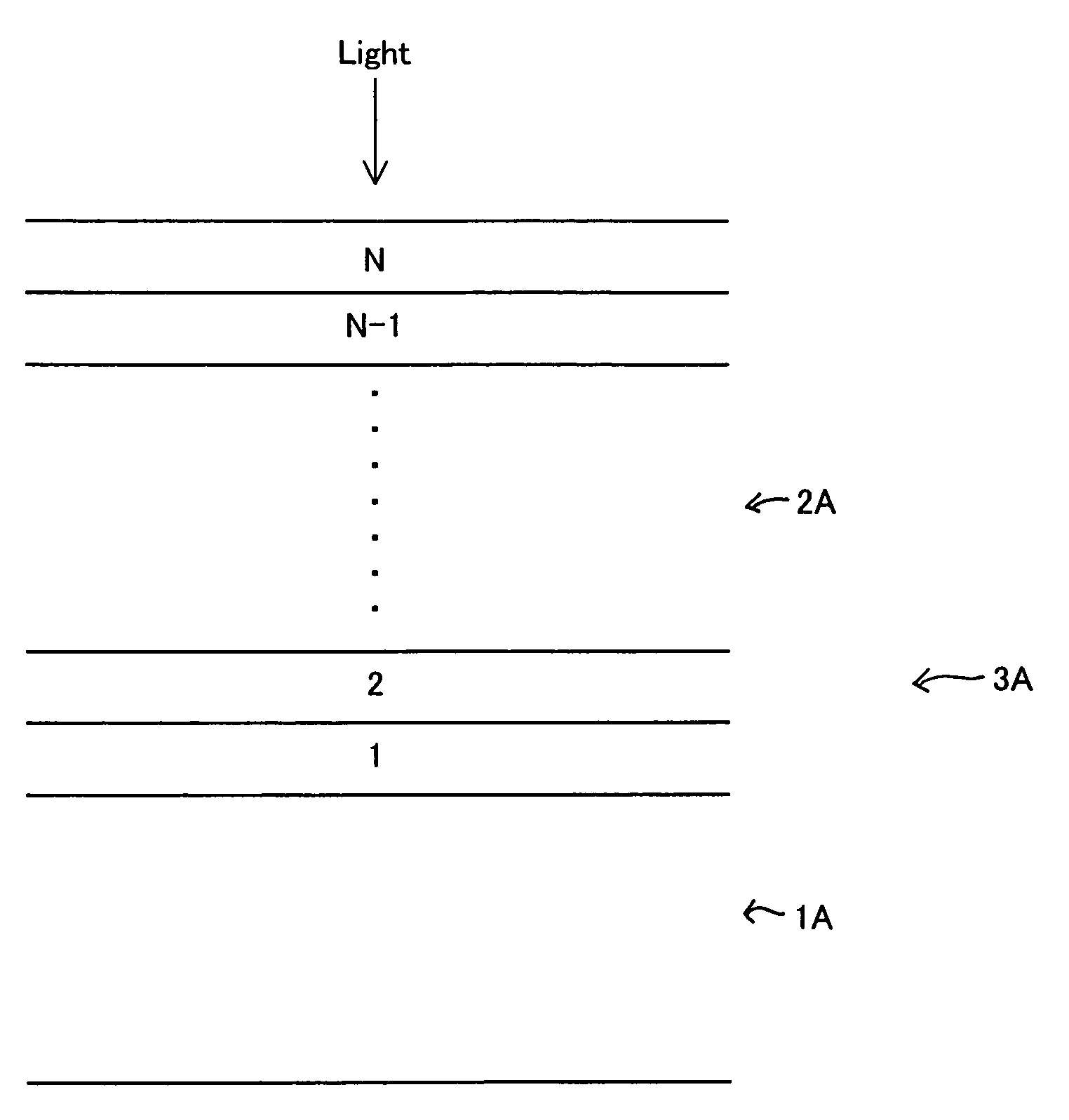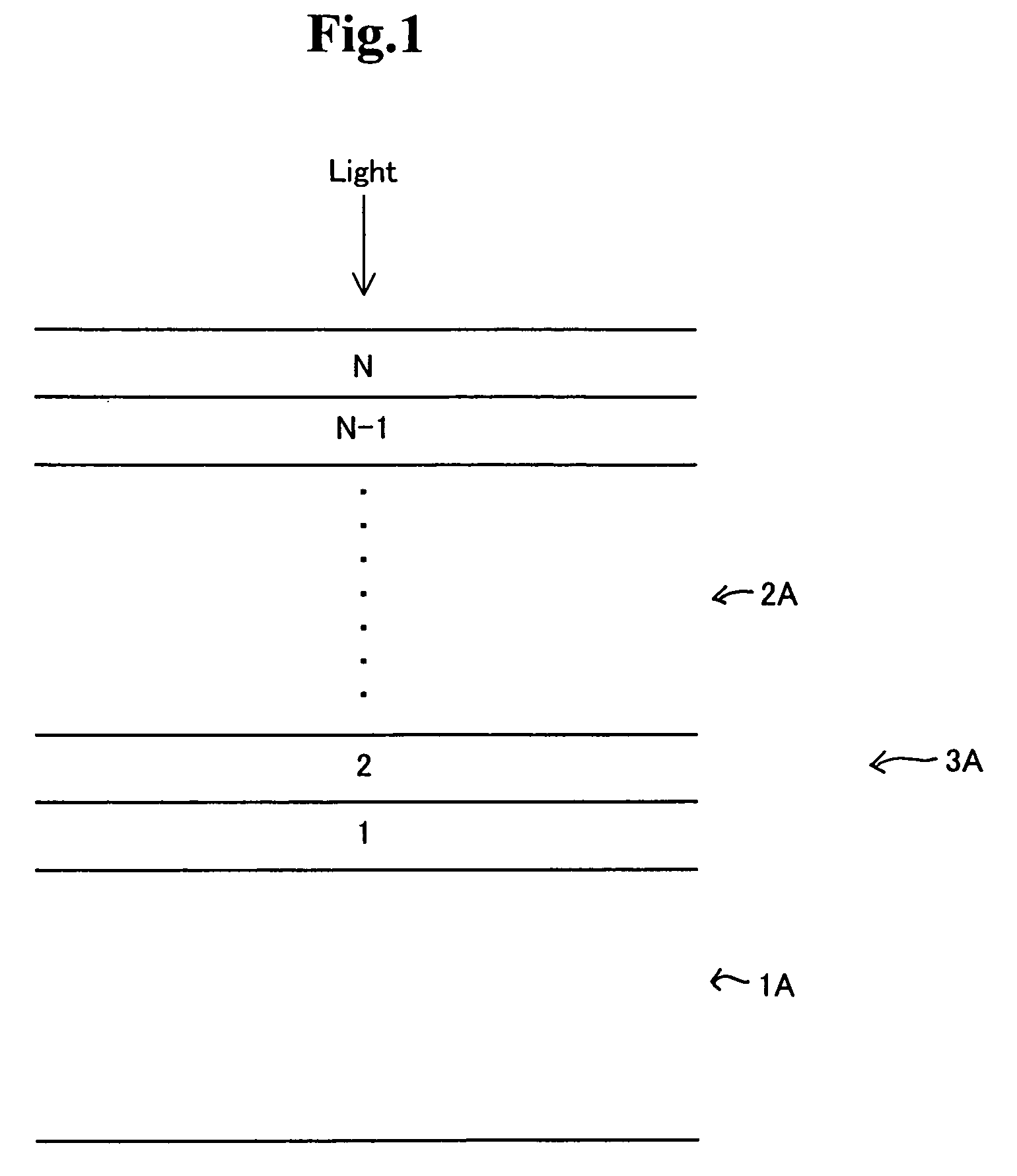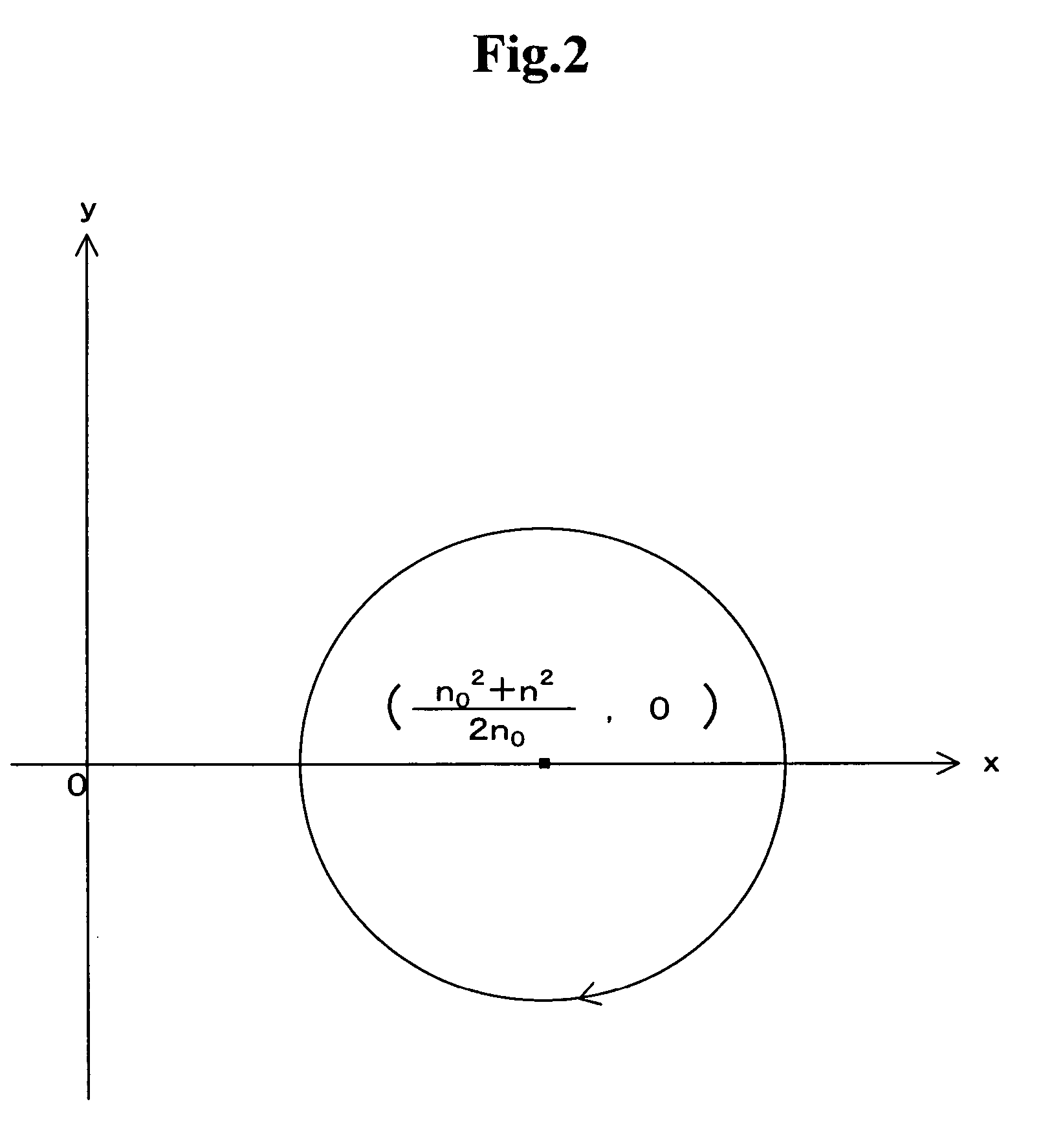Method of producing anti-reflection film
a technology of anti-reflection film and film layer, which is applied in the direction of instruments, natural mineral layered products, transportation and packaging, etc., can solve the problem of difficulty in accurately calculating the characteristic matrix
- Summary
- Abstract
- Description
- Claims
- Application Information
AI Technical Summary
Problems solved by technology
Method used
Image
Examples
example 1
[0071]A PET film with a thickness of 188 μm was used as the transparent substrate. The PET film had an attenuation coefficient of zero and a reflective index of 1.65. A hard coat material Z7501 commercially available from Nihon Synthetic Rubber Co. was coated on the transparent substrate to form a hard coat layer with a thickness of 5 μm. The hard coat layer had an attenuation coefficient of zero and a refractive index of about 1.5. Ag was deposited on the hard coat layer by sputtering to form a thin layer (next layer) with a thickness of 3.6 nm. The Ag layer had an attenuation coefficient of zero and a reflective index of 0.101. A mixture of a polyfunctional acrylic resin and silica was coated on the Ag layer by photogravure, and the coated layer was cured by UV irradiation after drying to form an outermost layer with a thickness of 50 nm. The outermost layer had an attenuation coefficient of zero and a refractive index of 1.51. The optical admittance Y at the interface between the...
example 2
[0075]An anti-reflection film was manufactured by the same method as in Example 1, except that Au was deposited by sputtering to form a layer (next layer) with a thickness of 5.9 nm, and the outermost layer had a thickness of 54 nm. The Au layer had an attenuation coefficient of zero and a reflective index of 0.35. The optical admittance Y at the interface between the outermost layer and the Au layer was calculated as follows:
Y=x+iy=1.57−0.64i
[0076]It was found that the anti-reflection film has the reflectivity of 0.0% at a wavelength of 550 nm. The values of A and B obtained by the same calculations in Example 1 are shown in Table 1.
PUM
| Property | Measurement | Unit |
|---|---|---|
| thickness | aaaaa | aaaaa |
| thickness | aaaaa | aaaaa |
| thickness | aaaaa | aaaaa |
Abstract
Description
Claims
Application Information
 Login to View More
Login to View More - R&D
- Intellectual Property
- Life Sciences
- Materials
- Tech Scout
- Unparalleled Data Quality
- Higher Quality Content
- 60% Fewer Hallucinations
Browse by: Latest US Patents, China's latest patents, Technical Efficacy Thesaurus, Application Domain, Technology Topic, Popular Technical Reports.
© 2025 PatSnap. All rights reserved.Legal|Privacy policy|Modern Slavery Act Transparency Statement|Sitemap|About US| Contact US: help@patsnap.com



